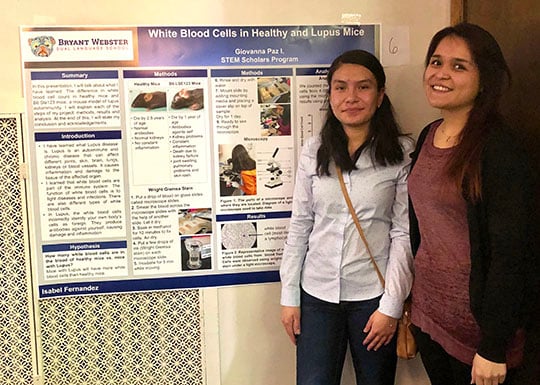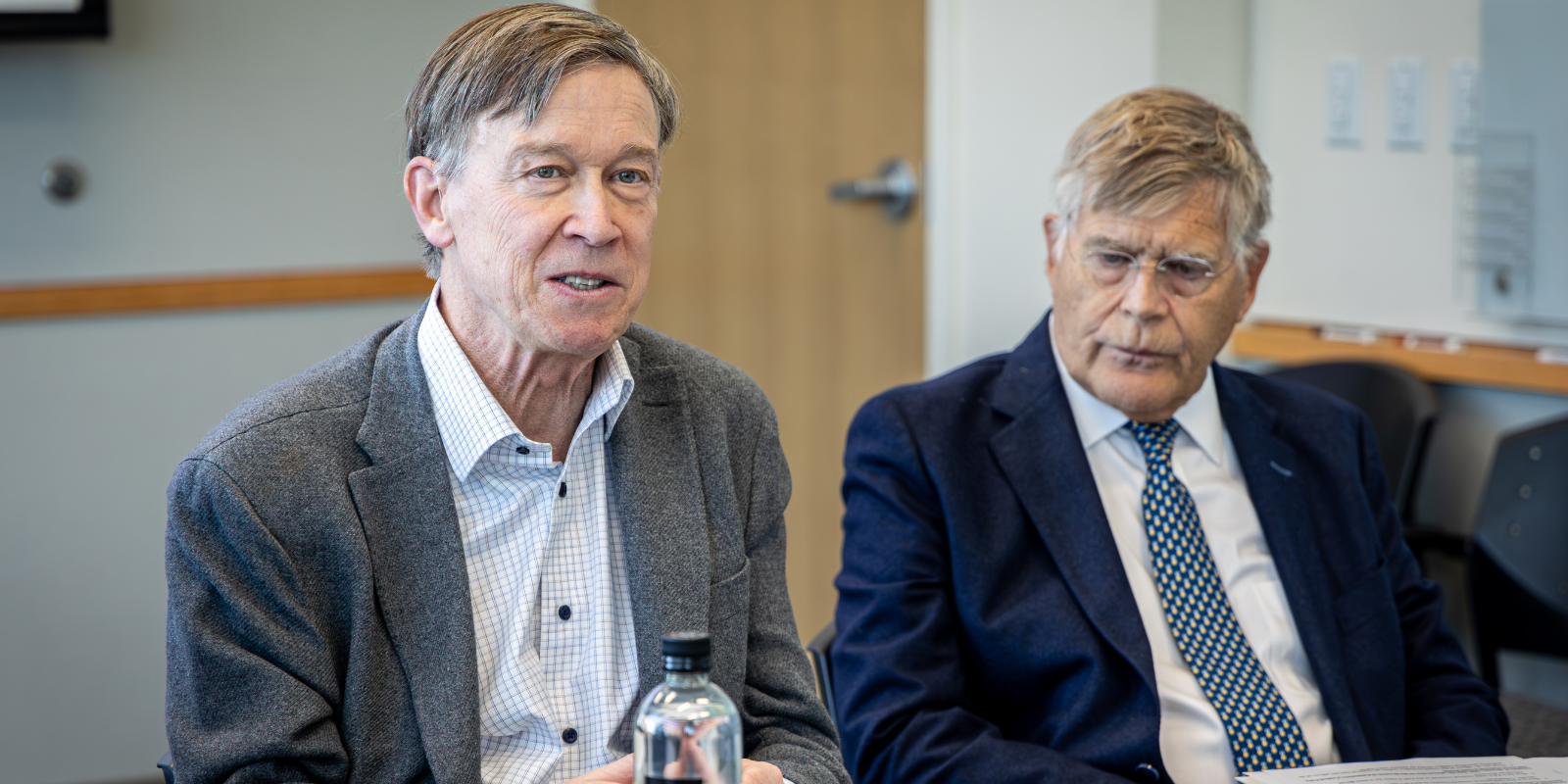Many scientists remember the thrill of taking a first glimpse through a microscope. Giovanna Paz, 15, recalled a similar rush, but a chat with scientist Isabel Fernandez sparked even more excitement. Meeting Fernandez, an MD/PhD student at the University of Colorado Anschutz Medical Campus, felt like having a sit-down with her future self.
At the suggestion of the STEM Scholars’ program grant writer Jacqueline Turner, a fellow CU Anschutz MD/PhD student in the University of Colorado School of Medicine, Fernandez volunteered to be Paz’s mentor in the budding program. Paz came to the United States from Guatemala as a 12-year-old, which happened to be Fernandez’s age when her family emigrated from Peru almost two decades ago.
“When Jackie told me about Giovanna, I said, ‘Oh my God, she’s basically like me. This is going to be really cool!’” Fernandez recalled.
Bonding over backgrounds
Meeting at a coffee shop, the pair bonded over similar backgrounds and, especially, an insatiable appetite to learn. Fernandez was struck by Paz’s maturity and intelligence. They quickly jelled as mentor-mentee, but also as friends.
“Giovanna has very diverse interests, which is very much appreciated in science. She has a curiosity about how things work,” Fernandez said. “I identified with a lot of her same struggles as an immigrant kid, such as explaining to parents what the culture is like, how she should be preparing for college.”
Paz has an interest in astronomy, so Fernandez plans to take her to a planetarium – an outing that’s been a hard sell to her collegiate friends. Until Paz came along, she laughed, “I hadn’t found anybody who is just as nerdy as I am.”
“When I was her age I didn’t know what science was,” Fernandez said. “I didn’t know how to get started on a career in science. I didn’t solidify my interest until I was an undergrad.”
CU Anschutz students happy to volunteer
The STEM Scholars program paired 11 CU Anschutz student volunteers with a seventh-grader at Bryant Webster Dual Language School in Denver. A science project performed by each mentor-mentee pair is at the core of the program, so Fernandez and Paz again met for coffee to brainstorm ideas.

Giovanna Paz, left, and Isabel Fernandez at the poster symposium for the STEM Scholars program last spring. |
They settled on an experiment about lupus when Fernandez mentioned how a lupus mouse model was taking place in a neighboring lab.
Paz began thinking science was “pretty cool” as she peered into the microscope. “It was interesting to see the cells, and it was my first time using the microscope,” she said. “There’s a lot to learn.”
Paz set out to compare how many white blood cells are in the blood of healthy mice vs. mice with lupus and what can be learned from the comparison. Study results bore out her theory: White blood cells did in fact appear in higher quantities in the mice with lupus.
“The most interesting thing I learned was about how autoimmunity works,” Paz said. “It creates white blood cells to fight off your own body cells (incorrectly identified as foreign).”
Successful presentation
The pair worked in the CU Anschutz labs on several weekends, prepping and viewing microscope slides of blood droplets and graphically charting their results. A few months later Paz stood in front of a poster and explained her scientific process to classmates, teachers and the STEM Scholars mentors. Detailing her experiment in both English and Spanish, she won “best presentation” at the symposium.
The project opened Paz’s eyes to the possibility that her future might involve something in science. “I’ve always found science pretty interesting, but after doing the program, that interest has solidified,” she said.
Turner said that’s a primary goal of the program – to open career paths to middle-schoolers who, like Paz, might otherwise lack the faintest idea about the possibilities.
“STEM Scholars is a large group effort involving many MSTP (Medical Scientist Training Program) students and aiming to provide young students with experience, exposure and opportunity to interact with and learn about various fields of science and medicine,” Turner said. “We hope this program will foster curious scientific minds, build enduring relationships, and give the students at Bryant Webster a unique opportunity.”
Fernandez is a fan of community outreach such as STEM Scholars, noting how she would have benefited as a teenager from a similar program. Despite the challenges, she managed straight As and became an honors student – the same track Paz is on as she enters high school this fall.
“I kind of navigated the system on my own,” Fernandez said. “It’s challenging, but doable. That’s why I think I can intervene now on Giovanna’s behalf, telling her, ‘You should apply for this scholarship; you should be taking this class.’ It’s paying it forward.”
The STEM Scholars program gives students the all-important opportunity to “do” science rather than just memorizing scientific concepts, which often happens in the classroom. Science hinges upon asking questions, Fernandez said.
‘Opening curiosity’
“What do we know and what do we want to find out? I love that process, and that’s probably the reason I ended up mentoring in this program,” she said. “By doing, you open more curiosity. It’s more satisfying.”
When Fernandez finishes her MD/PhD program next May, she will end an arduous, yet satisfying, 12-year journey through post-high school academia. She studied pediatric immune deficiencies for her doctoral thesis, and she hopes to continue conducting research in tandem with clinical practice.
“I recently told Giovanna’s parents how many years I’ve been in school, and Giovanna’s mother just gasped,” Fernandez said with a smile. Her parents assumed that going to university, like in Guatemala, was a four-year proposition.
But with Fernandez as both a friend and mentor, Paz is seeing not only the doorway to science, but how long – and potentially fulfilling – an educational journey might be.
With a smile, the mentor from Peru asked: “Giovanna, do you want to do this?” Without hesitation, the eager teen from Guatemala beamed through her braces, “Why not? I like the challenge.”



